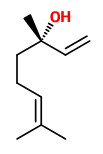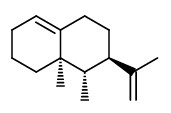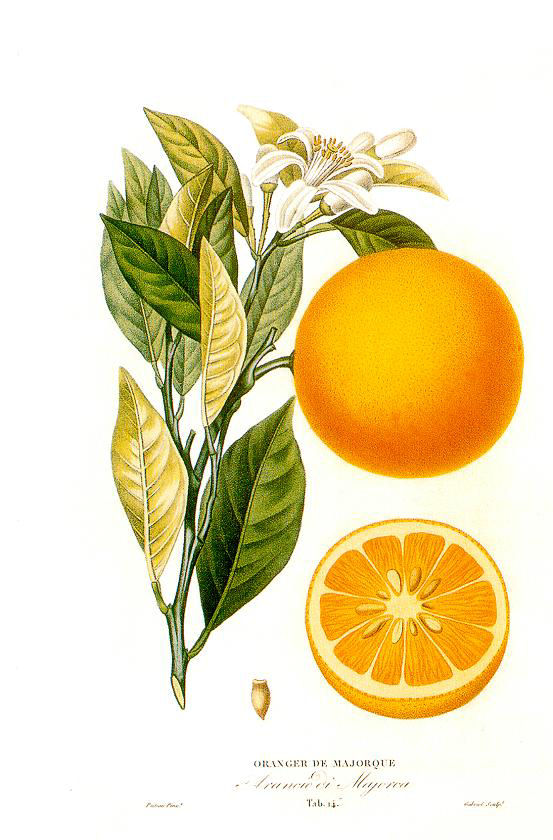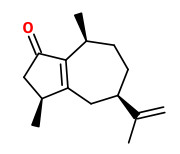Citrus × sinensis L. - Rutaceae - orange, sweet orange, Orange, Apfelsine
Evergreen tree, up to 10m high; most cultivated fruit tree of the world.
„It is perhaps worth mentioning that the word orange always referred to the sour orange (Citrus aurantium) from the 11th century to the end of the 18th century. It was only after the Portuguese started importing new varieties directly from China in the first half of the 17th century that a new type called Portugal orange slowly spread to other parts of southern Europe. The first modern type of sweet orange tree was imported to Portugal in 1635. By 1650 it was known also in France and Italy. The fruit was sweet and could be eaten fresh, unlike other citrus fruits known at the time. In many countries it was called Portugal orange; in fact the name of orange is still indentical to the name of Portugal in many languages: in Greece (portokalo), in parts of Italy (portogallo) and in Albania, Romania and several countries in the near east. Elsewhere it was called sweet orange or China orange. Its scientific name became Citrus sinensis (Chinese citrus).“
http://users.kymp.net/citruspages/sweetoranges.html
„Cold-pressed Florida (Valencia) orange oil contains a series of bases, the main one of which is 3-hexylpyridine at ca. 20 ppb. Smaller amounts of 3-heptyl-, 3-octyl-, and 5-hexyl-2-methylpyridine are also present, as are 3-(4-methylpentyl)- and 3-(4-methylhexyl)pyridine. There are traces of other, more generally known, pyridines. 3-Hexyl-, 3-heptyl-, and 3-octylpyridine and 5-hexyl-2-methylpyridine were also detected in Brazilian (Pera) orange oil. The flavor threshold concentration of 3-hexylpyridine in water is 0.28 ppb.“ 3-hexylpyridine has a fruity citrus aroma, reminiscent of fruit peel of orange and tangerine.
[Occurrence of pyridines and other bases in orange oil., Thomas, A. F., Bassols, F., Journal of Agricultural and Food Chemistry, 40(11), 1992, 2236-2243]
„The aroma intensity (Lo) of each aroma component is expressed by dividing the concentration of individual components at the threshold level of the volatile oils (Cr), by its detection threshold or recognition threshold (Tc). For this equation, we examined which was the most suitable, the detection threshold or the recognition threshold as the Tc value. This olfactory measurement is proposed as an objective evaluation method for food aroma quality. It was found that limonene contributes to the characteristic aroma as the base note. Limonene, linalool, and octanal were shown to be essential for the characteristic aroma. The usefulness of Lo values for the characterization of the aroma of Citrus sinensis OSBECK, cv. Shiroyanagi, was shown by the fact that a mixture of 11 compounds selected by this method (using the detection threshold as Tc) - limonene, linalool, octanal, decanal, dodecanal, geranial, neral, myrcene, α- and β-sinensal, and citronellal -duplicated the aroma of navel oranges very closely.“
[Tamura, H., Y. Fukuda, and A. Padrayuttawat. „Characterization of citrus aroma quality by odor threshold values.“ 1996, 282-294]
„Application of the aroma extract dilution analysis (AEDA) on an extract of the volatiles, isolated by solvent extraction of fresh orange juice followed by sublimation in vacuo at room temperature, resulted in the detection of 42 odour-active compounds with flavour dilution (FD) factors between 4 and 1024. Among the 41 odorants identified, ethyl butanoate (fruity), followed by (Z)-hex-3-enal (green) and 3a,4,5,7a-tetrahydro-3,6-dimethyl-2(3H)-benzofuranone (sweet, spicy) showed the highest FD factors. Further key odorants were ethyl 2-methylpropionate, (S)-ethyl 2-methylbutanoate and 4,5-epoxy-(E)-dec-2-enal (FD: 128). Application of the static headspace/olfactometry (SHO) on a sample of the same juice revealed (R)-α-pinene, (R)-limonene, ethyl butanoate, (S)-ethyl 2-methylbutanoate and acetaldehyde as the most odour-active compounds in the headspace above the juice.“
[Identification of the most odour‐active volatiles in fresh, hand‐extracted juice of Valencia late oranges by odour dilution techniques., Hinterholzer, A., Schieberle, P., Flavour and fragrance journal, Vol.13(1), 1998, 49-55]
The most important compounds for the typical flavour of fresh pressed orange juice are (+)-limonene, acetaldehyde and decanal, with (Z)-3-hexenal, tr-4,5-epoxy-(E)-2-decenal, ethyl butanoate, ethyl-2-methylbutanoate and 1-octen-3-one adding fruity and grassy notes.
[Andrea Büttner: Wichtige Aromastoffe in frisch gepressten Citrusfruchtsäften. Herbert Utz Verlag, 1999, 79-80]
The most abundant compounds found in commercial orange essence oil (Givaudan, from the water-insoluble, lipophilic portion of the condensed distillate formed when orange juice is thermally concentrated) were limonene (94.5%), myrcene (1.0%), valencene (0.8%), linalool (0.7%), octanal (0.3%), decanal (0.3%), and ethyl butyrate (0.3%). „Compounds which exhibited strongest aroma activity (in order of decreasing intensity) were: octanal, wine lactone, linalool, β-ionone, decanal, β-sinensal, and citronellal. These contributed citrusy, floral, sweet, and herbal notes to the oil… While esters are the most important aroma compounds in several fruits, the oxygenated terpenes and medium length aldehydes are more important in citrus. However, ethyl butyrate imparted a strong fruity note and wine lactone (a cyclic ester), was one of the key aroma impact compounds in orange essence oil and imparted a strong herbal, spicy note.“
[Högnadóttir, Áslaug, and Russell L. Rouseff. „Identification of aroma active compounds in orange essence oil using gas chromatography–olfactometry and gas chromatography–mass spectrometry.“ Journal of chromatography A 998.1-2 (2003): 201-211] http://sites.chem.colostate.edu/diverdi/C431/experiments/gas%20chromatography%20and%20the%20smelloscope/references/j_chromat_a_2003_v998_p201.pdf
HR-GC-O and AEDA was applied on a Brazilian orange essence oil (containing limonene 91.7% and valencene 1.4%) with the highest quality in freshness, sweet fruityness and juicyness. Key contributors to the flavor were linalool (FD 512, flowery sweet), decanal (FD 512, citruslike soapy), octanal (FD 256, citruslike green), and ethyl butyrate (FD 256, fruity). Other potent odorants were FD 128: α-pinene; FD 64: limonene, 6-methyl octanal (orange-peel like), 4-decenal, trans-4,5-epoxy-(E)-2-decenal. Odorants with low FD values but interesting odor qualities (fresh, fatty, soapy, orange-peel like) were branched aldehydes like 6-methyl heptanal, 8-methyl nonanal, 8-methyl decanal, (E)-8-tetradecenal and (Z)-8-tetradecenal.
[Widder, S., Eggers, M., Looft, J., Vossing, T., & Pickenhagen, W. (2003). New flavor compounds from orange essence oil. Handbook of Flavor Characterization: Sensory Analysis, Chemistry, and Physiology, 207-216]
„The composition of volatile aroma constituents of freshly hand extracted orange juice differed significantly from all commercial juices. Despite possessing less total volatiles than commercial juices, freshly hand extracted juice was characterized by a higher number of esters and aldehydes than commercially processed juices.“ (Aldehydes e.g. Acetaldehyde, hexanal, (E)-2-hexenal, heptanal, decanal; esters e.g. ethyl butyrate, ethyl 2-methyl butyrate)
[Bylaite, Egle, and Anne S. Meyer. „Characterisation of volatile aroma compounds of orange juices by three dynamic and static headspace gas chromatography techniques.“ European food research and technology 222.1 (2006): 176-184]
„Examination of selected highly odoured constituents of orange and mandarin [peel] oils shows the concentration and threshold of these constituents. If the concentration in ppm is divided by its threshold (also in ppm), the percentage importance of these constituents reveals that in orange oil the major components responsible for the odour character of this oil are octanal, decanal, linalool, ß-sinensal, α-sinensal, and nonanal. Similarly, α-sinensal, octanal, decanal, methyl N-methylanthranilate, nonanal and linalool are the major components responsible for the odour of mandarine oil.“
[Swift, Karl AD, ed. Advances in flavours and fragrances: From the sensation to the synthesis. Royal Society of Chemistry, 2007, 79-80]
„Gas chromatography-mass spectrometry (GC-MS) and gas chromatographyolfactometry (GC-O) were used to determine the aromatic composition and aroma active compounds of fruit juice and peel oil of Jinchen sweet orange fruit. Totals of 49 and 32 compounds were identified in fruit juice and peel oil, respectively. GC-O was performed to study the aromatic profile of Jinchen fruit juice and peel oil. A total of 41 components appeared to contribute to the aroma of fruit juice and peel oil. Twelve components were the odorants perceived in both samples. The aromatic compositions of fruit juice were more complex than that of peel oil. Ethyl butanoate, β-myrcene, octanal, linalool, α-pinene, and decanal were found to be responsible for the aromatic notes in fruit juice and peel oil. Nineteen components have been perceived only in the juice and ten compounds were described as aromatic components of only the peel oil by the panelists. These differences lead to the different overall aroma between fruit juice and peel oil… Esters have been described to be most important to orange flavor. Ethyl butanoate followed by ethyl acetate, ethyl propanoate, and methyl butanoate, only present in fruit juice, were not detected in peel oil. “
[Characterization of aroma active compounds in fruit juice and peel oil of Jinchen sweet orange fruit (Citrus sinensis (L.) Osbeck) by GC-MS and GC-O. Qiao, Y., Xie, B. J., Zhang, Y., Zhang, Y., Fan, G., Yao, X. L., Pan, S. Y., Molecules, Vol.13(6), 2008, 1333-1344]
http://www.mdpi.com/1420-3049/13/6/1333/pdf
„Quantification of 17 key odorants by stable isotope dilution assays followed by a calculation of odour activity values (OAVs) on the basis of odour thresholds in water or citrate buffer (pH 3.8), respectively, revealed the following most important odorants in the overall aroma of the freshly reconstituted juice: (R/S)-linalool, (R)-limonene and (S)-ethyl 2-methylbutanoate with the highest OAVs (>1,000) followed by octanal, (R)-α-pinene, ethyl butanoate, myrcene, acetaldehyde, decanal and (E)-β-damascenone with OAVs > 100. A model mixture containing all 14 aroma compounds with OAVs > 1 in their actual concentrations in the juice showed a good similarity with the aroma of the original orange juice under investigation, thus corroborating that the key odorants of a freshly reconstituted orange juice were characterised for the first time.“
[Averbeck, Melanie, and Peter H. Schieberle. „Characterisation of the key aroma compounds in a freshly reconstituted orange juice from concentrate.“ European Food Research and Technology 229.4 (2009): 611-622]
The concentration of total volatiles in orange juice from Turkey was nearly 30mg/l. Terpenes quantitatively and qualitatively were the main group of the volatile fraction in orange juice, with limonene representing
71% of the total volatiles analysed, followed by valencene. Potent volatile compounds with highest odour activity values (OAV) were ethyl butanoate (OAV 784, fruity-apple), nootkatone (500, citrusy-grapefruit), linalool (369, floral-green), limonene (320, orange-like-fruity), β-sinensal (30, fruity-orange), carvone (8, minty), nonanal (5, green-floral), and ethyl octanoate (4, fruity-banana).
[Determination of volatile, phenolic, organic acid and sugar components in a Turkish cv. Dortyol (Citrus sinensis L. Osbeck) orange juice.Kelebek, H., Selli, S., Journal of the Science of Food and Agriculture, Vol.91(10), 2011, 1855-1862]
The most potent volatile compounds with highest odour activity values (OAVs) in blood orange juice were limonene (OAV 177-238, orange-like-fruity), nootkatone (167-177, citrusy-grapefruit), linalool (73-80, floral-green), ethyl butanoate (3-11, fruity-apple), β-myrcene (4-8, balsamic-geranium), octanal (4-7, green-fruity), terpinen-4-ol (3-6, floral-fresh), and α-terpineol (5-7, green-violet).
[Selli, Serkan, and Hasim Kelebek. „Aromatic profile and odour-activity value of blood orange juices obtained from Moro and Sanguinello (Citrus sinensis L. Osbeck).“ Industrial Crops and Products 33.3 (2011): 727-733]
„Application of a comparative aroma extract dilution analysis on a hand-squeezed (juice A) and an industrially squeezed, unpasteurised orange juice (juice B), revealed qualitatively almost the same set of odour-active compounds. However, while in juice A, vanillin, ethyl butanoate, wine lactone, (Z)-3-hexenal, (S)-ethyl 2-methylbutanoate and (S)-linalool were detected with the highest flavour dilution (FD) factors, in juice B prepared by means of an FMC extractor, several compounds, like (R)-limonene, (R)-α-pinene and octanal showed higher FD factors, in addition to ethyl butanoate, wine lactone and (S)-ethyl 2-methylbutanoate. Quantification of seventeen odorants in both juices by means of stable isotope dilution assays followed by a calculation of odour activity values (OAV; ratio of concentration to odour threshold) revealed a clear change in the ranking order: while (S)-ethyl 2-methylbutanoate, (R)-limonene, (Z)-3-hexenal and linalool were first in rank among the odorants of juice A, in juice B, (R)-limonene and (S)-linalool followed by (S)-ethyl 2-methylbutanoate showed the highest OAVs. Sensory experiments revealed that the much higher concentrations of the seven peel oil constituents, and the lack in (Z)-3-hexenal, are the reason for the aroma differences observed for both juices. Further experiments indicated that lowering the pressure during commercial juicing, and also the avoidance of a freezing/thawing process could be helpful in getting closer to the aroma of hand-squeezed orange juice, because peel oil constituents are lowered and, in particular, the latter procedure leads to a complete degradation of (Z)-3-hexenal.“
[Comparison of the key aroma compounds in hand-squeezed and unpasteurised, commercial NFC juices prepared from Brazilian Pera Rio oranges., Seideneck, R., Schieberle, P., European Food Research and Technology, 232(6), 2011, 995-1005]
 (R)-limonene (citrus) |  (S)-linalool (coriandrol: flowery) |  (Z)-3-hexenal (green) |  (S)-ethyl 2-methylbutanoate (fruity) |  (+)-valencene (orange woody) |
„In terms of volume, sweet orange peel oil is the most important and least expensive of all citrus oils… The preferred Valencia qualities exceed those of other cultivars with an aldehyde level of up to 3%, with even-numbered fatty aldehydes being more abundant than the odd-numbered ones. The double unsaturated (2E,4E)-deca-2,4-dienal has an extremely high aroma value in Valencia oils, since its concentration (ca.225ppm) exceeds its treshold value by a factor of over one million. Two constituents that contribute even more to the character and quality of orange oil are α- and β-sinensal. (all-E)-α-sinensal has both a pronounced orange aroma character and an extremely low odor treshold of 50ng/l water. In contrast, β-sinensal has a metallic-fishy note that can lead to objectionable off-odors of the oils if present in higher concentrations. The occurence of (+)-valencene as the main component of the sesquiterpene fraction differentiate orange and grapefruit oil from other citrus oils.“
[Scent and Chemistry, Günther Ohloff, Wilhelm Pickenhagen, Philip Kraft, Wiley-VCH, 2012, 225-226]
„An investigation of the aromas of grapefruit, orange, apple, and mango revealed the presence of an odor-active compound that gave off a strong woody odor when assessed by gas chromatography–olfactometry. We isolated the compound from a high-boiling fraction of an orange essential oil, and subsequent nuclear magnetic resonance analyses of the isolated compound identified it as rotundone. Mass spectra and retention indices obtained from aroma concentrates of grapefruit, apple, and mango were identical to those of rotundone, which was therefore determined to be the common woody compound in these fruits. Sensory analyses were performed to assess the effects of rotundone on model beverages of the various fruits. It was revealed that rotundone added at even subthreshold levels to model beverages did not confer directly the woody odor, but had significant effects on the overall flavors of the beverages, helping them to better approximate the natural flavors of the fruits.“
[Nakanishi, Akira, et al. „Identification of rotundone as a potent odor-active compound of several kinds of fruits.“ Journal of Agricultural and Food Chemistry 65.22 (2017): 4464-4471]
Main volatiles of Citrus sinensis flowers were 2-hexenal (tr-2.3%), sabinene (6.1-11.2%), β-pinene (0-11.8%), myrcene (1.6-2.5%), limonene (1.5-4.6%), β-ocimene (1.1-8.4%), cis-β-terpineol (0-3.6%), linalool (24.9-46.9%), α-terpineol (tr-4.5%), β-elemene (tr-5.7%), caryophyllene (tr-1.3%), farnesene (1.0-3.8%), δ-cadinene (tr-1.0%), nerolidol (tr-3.6%), farnesol (tr-1.5%), methyl geranate (0-15.8%), phenylacetonitrile (tr-2.4%), indole (4.4-10.4%), methyl anthranilate (0-1.7%), and (E)-8-heptadecene (tr-2.7%).
[Azam, M., Song, M., Fan, F., Zhang, B., Xu, Y., Xu, C., & Chen, K. (2013). Comparative analysis of flower volatiles from nine Citrus at three blooming stages. International journal of molecular sciences, 14(11), 22346-22367] http://www.mdpi.com/1422-0067/14/11/22346/htm

llustration: Citrus sinensis (L.) Histoire et culture des orangers A. Risso et A. Poiteau. - Paris Henri Plon, Editeur, 1872
[PD, Wikimedia Commons]
Citrus × sinensis, Wien, Palmenhaus Schönbrunn
© Rolf Marschner (2015),
www.botanische-spaziergaenge.at


